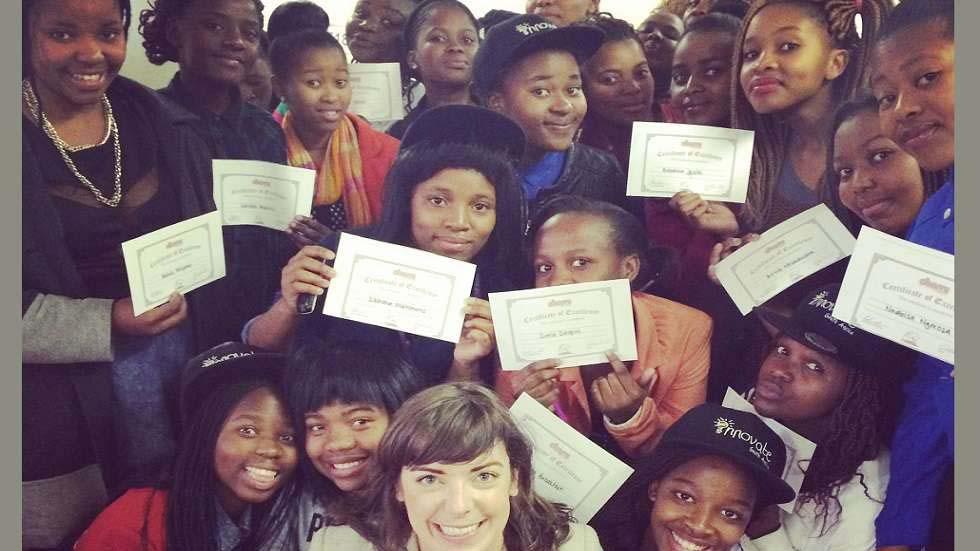Areas in the world that are of the biggest concern are areas in the Middle East where women, and even girls are subjected to confrontations for trying to pursue an education. In cultures like this in the Middle East, in some less developed parts of the world the communities have such great pressures on women that none ever attempt to gain an education. In some parts of the world there are groups of women trying to make sure that young girls have a chance at an education that the women never had. Since 42% of girls in the developing are not enrolled in any form of schooling, there have been programs created to help these girls like Room to Read. Organizations like Room to Read set up programs for girls to obtain an education in the developing world by partnering with the local communities and parents. If a whole group of adolescent girls is given a disadvantage when it comes to education opportunities there can be drastic affects to the economy, as has been said before.
There are 600 million adolescent girls (age 10-24) and this group is one of the most rapidly growing in the developing world, which means that this group is one of the most viable but neglected groups. The education of girls also vastly impacts the populations in the developing world because a girl that receives an education above 7th grade has 2.2 fewer children in her life. There are some great examples of countries and cultures turning things around, like in Afghanistan. In Afghanistan nearly 40% of the 5-million afghan children that were enrolled in the schools as of 2006 were girls. That shows tremendous progress in a country that was once war torn and dominated by a culture that would be intolerable of such a thing. Expanding education opportunities can be seen and must be seen as one of the missions of the highest priorities.
Another great example of the international community working together to expand opportunities for girls is the situation in Bangladesh. In Bangladesh the International Development Association (IDA) financed an education objective in 1993 called the Female Secondary School Assistance Program. This program, along with contributions from other international organizations, has tripled the access to education both primary and secondary for girls in Bangladesh. Nearly 2.8 more million girls were enrolled in secondary schools between 1991 and 2005. The contributions from the IDA since 1993 total up to nearly #185 million which were used in school programs, creation of schools, and other methods.
Another great organization that has invested itself in expanding education opportunities for girls is the MacArthur Foundation. The MacArthur Foundation gives the example of how in sub-Saharan Africa; there is a 77% enrolment rate in primary schools but only 36 % in secondary schools. The MacArthur Foundation has the objective of providing grant-based aid in order to ensure that girls in the developing world’s have access to quality secondary education. The MacArthur Foundation is currently active in Uganda, Nigeria, and India and works with local communities and the government in order to start pilot programs and schools for girls in these countries. This organization is a perfect example of the kind of organizations that everyone should be looking into as part of a solution for expanding education opportunities for girls in the developing world. As soon as every member of the population of the countries in the developing world has access to proficient education opportunities, every kind of opportunity in these countries can expand for everybody. Although the overall focus of the committee is really the expansion of education opportunities for girls in the developing world, it should be the goal of the world to expand opportunities for everyone.
There are approximately 775.4 million illiterate adults in the world, with 64.1 % of that population being females. The fact that there are a higher percentage of illiterate female adults in the world shows that it is a problem within the mindsets of the education systems throughout the world. Although literacy is not the perfect test of a proper education, it is a great signifier for the condition of the rest of the problem of education opportunity. The problem with looking at the education problems in the world is that it is hard to look at specific measurable problems. For example, even if girls are shown to be receiving some type of formal schooling, that schooling may only be preparing them for a life of being a wife/mother. This is true in many developing countries where we can see the amount of women receiving a secondary or collegiate is not where it should be.
To look at the issue of education in the developing world, specifically for girls, we must look closer at the aspects of the society that surround education. In the world there are 31 million girls that are currently in no type of formal schooling, and therefore are being denied even a chance at education and a life outside of being a wife/mother.
